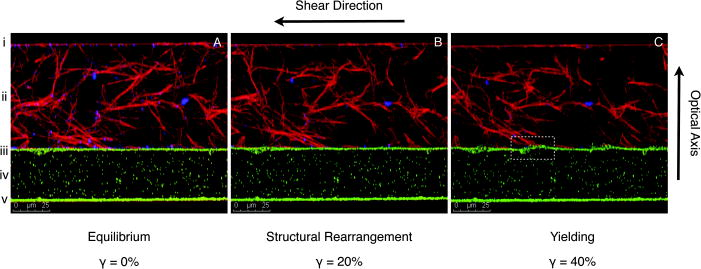Richard Arevalo
When Rich Arevalo graduated from Georgetown in 2005, he knew that he wanted to go to graduate school for physics. He first attended City College of New York, but in 2007 he returned to Georgetown and joined the research groups of Dr. Dan Blair and Dr. Jeff Urbach.
Rich has always been interested in the traditional physics curriculum, so he chose to follow the standard Ph.D. track, rather than the Industrial Leadership in Physics track. After completing his coursework, he began work on his thesis. He now conducts research on the properties of biopolymer networks.
“I am investigating how stress propagates through a branched biopolymer network,” Rich says. “Our research group uses novel dynamics imaging technology to directly visualize the microscopic behavior of soft materials under precisely controlled shear. Consequently, we gain the insight necessary to explain the interesting macroscopic mechanical behavior of our soft materials on a more fundamental and unique level.”
Rich recently had an article published in Chaos: An Interdisciplinary Journal of Nonlinear Science. The article, entitled “Four-dimensional structural dynamics of sheared collagen networks,” was co-authored by Dr. Urbach and Dr. Blair.
After completing his degree, Rich plans to stay in the Northeast. He hopes to work for a security agency, possibly a defense contractor.
In his free time, Rich enjoys playing tennis, going to concerts, and playing the guitar.

The image above is from Rich’s article in Chaos. His own explanation of the research is below:
Soft biopolymer networks undergo substantial bulk stiffening and contraction when subject to shear strain. These nonlinear rheological signatures have been well-documented for a wide range of semiflexible and stiff biopolymers, but the underlying geometric fiber rearrangements have not been measured and the resulting propagation of stress through the microscopic network has not been experimentally assessed.
We apply precisely controlled shear strain to collagen gels adhered to thin elastic polyacrylamide gel substrates embedded with fluorescent microspheres while simultaneously imaging the three-dimensional networks with a coupled confocal-rheometer. We observe dramatic network realignment in the direction of shear driven by the buckling, rotation, and stretching of undulated constituent fibers and simultaneously measure stress inhomogeneities at the collagen-polyacrylamide interface.
With the addition of fluorescent tracer particles in the collagen network, we observe nonaffine network deformations strongly correlated with the concurrently measured bulk stiffening. These observations elucidate the physical mechanisms governing contraction, strain-stiffening, and our recent observation of the system-size dependence of the stiffening effect.
